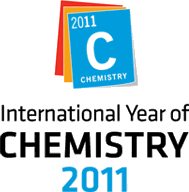Panasonic acquired Sanyo in 2009 and they now possess the Eneloop® brand.
They sell the same batteries either as Enenoop or Panasonic.
These are NiMH 1.2 V cells
(Nickel-metal hydride)
characterized by a revolutionary low rate of self-discharge which allows them to be sold precharged
and ready-to-use
(that wasn't possible with older-technology NiMH batteries,
which typically loose between 0.5% and 4% of their capacity per day).
Proper LSD NiMH batteries currently retain about 65%
of their capacity after three years of shelf life.
The technology is all but restricted to AAA and AA sizes
(C and D sizes have been marketed in Japan and Singapore).
Two different nominal capacities are available,
called standard and high-capacity
(also known as pro or XX).
A third type, dubbed lite, was introduced in Japan in June 2010 but
has not found its way to the US market yet (it was upgraded in 2013, like the other two ratings).
It features roughly half the capacity and twice the allowed number of charging cycles, at a lower cost per unit
(which is crucial for low-power devices).
Low Self-Discharge Nickel-Metal Hydride Rechargeable Batteries (LSD NiMH)
| Size | Rating | Min. | Typ. | Max. | 1 year | 3 years | 10 years | Cycles |
| AA | Standard | 2200 mAh | | | 85% | 75% | 70% | 2100 |
The outer diameter for the high-capacity AA format (14.4 mm)
is slightly larger than the standard one (14.1 mm)
which may prevent the use of high-capacity cells in some devices manufactured to tight tolerances.
Standard cells leave the factory charged at about 75% of their rated capacity.
The high-capacity version is only charged to 50% of the nominal capacity.
(It's widely heralded that solar energy is used for that initial charge.)
Therefore, it may still be advisable to charge those batteries before first use,
although it's not an absolute necessity if you can live with a shorter first cycle.
Besides Sanyo/Panasonic Eneloop, it seems that the only reliable make of LSD NiMH is
AmazonBasic (possibly just a re-branding of the same).

Peukert's law (1897)
|
Wilhelm Peukert (1855-1932)
Introduction to Peukert's Law
(Amrita Vishwa Vidyapeetham).
This is a modern selection of generic sizes based on older
primary cells.
Many recently-manufactured devices accomodate either primary cells with
a nominal voltage of 1.5 V or secondary (rechargeable)
cells with a nominal voltage of 1.2 V (NiMH) or 1.25 V (CdNi).
Lithium batteries (primary or secondary) have a nominal voltage of
3.6 V and are not interchangeable with these.
Most come in the familiar button-top design, where the central part
is raised. The alternate flat-top design is rarely used for
consumer products with replaceable batteries; they are typically soldered in place
and/or made available with solder tabs. (In unmarked flat-top cylindrical round cells,
the positive electrode is normally indicated by a reduced-diameter collar.)
Some common sizes for batteries with nominal voltages in the 1.2V to 1.5V range (per cell):
| Alkaline | Popular Designations | Cells |
| 8LR932 | A23 | 8 |
| 6LR61 | 9 V, PP3, E-Block | 6 |
| 4LR25Y | 6 V, Lantern | 4 |
| 3LR12 | 4.5 V, Flat | 3 |
| LR20 | D | 1 |
| LR14 | C | 1 |
| LR6 | AA | 1 |
| LR03 | AAA | 1 |
| AAAA | 1 |
| LR1 | N, Lady | 1 |
The recheargeable lithium battery packs in high-end products often use proprietary
formats, mostly for commercial reasons.
The following generic sizes are also used
Common generic sizes for lithium-ion batteries :
| Single-use | Rechargeable | Cells | Other designations |
| CR123 | RCR123 | 1 | 16340 |

Battery nomenclature
|
List of battery types
|
List of battery sizes

